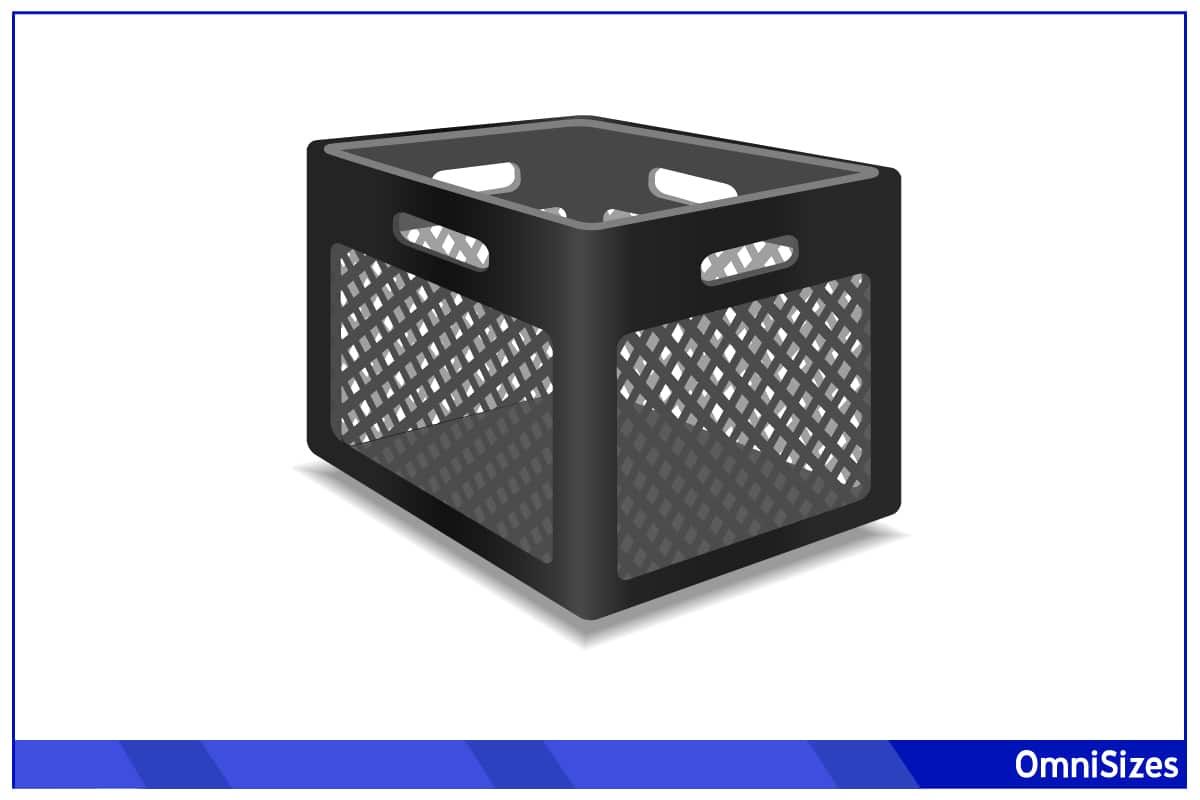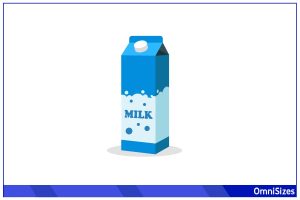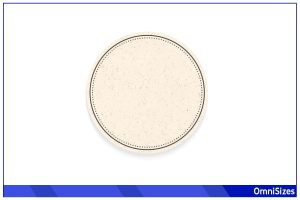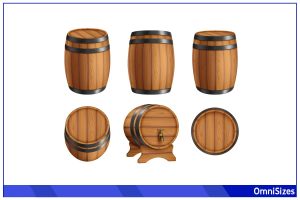Milk crates are versatile tools used in various settings, from dairy transportation to creative home projects. Milk crate sizes may seem straightforward, but there’s a surprising variety to explore. These crates come in different dimensions, depending on their usage.
The standard square milk crate size is typically 13 × 13 × 11 inches (33 × 33 × 28 cm) and can hold up to 16 quarts (15.14 liters) at a time. Rectangular milk crates typically measure around 19 × 13 × 11 inches (48 × 33 × 28 cm) and hold up to 24 quarts (22.71 liters).
This guide will take you deeper into the fascinating world of milk crate types and sizes. It will also describe what to do with spare milk crates you may have.
Milk Crate Sizes
Milk crates, a staple in storage and transport, come in an array of sizes. These versatile containers serve various purposes from organizing books to transporting dairy products.
Standard Sizes
Standard milk crates usually measure around 13 × 13 × 11 inches. This size is ideal for everyday use, including storage of vinyl records, books, and, traditionally, milk bottles. These crates are designed to carry up to 16 quarts of liquid or around 40 pounds.
Small Milk Crates
Smaller crates, often measuring around 12 × 12 × 10.5 inches, are perfect for tighter spaces. They’re a favorite in classrooms for storing supplies and in homes for organizing small items. Their compact size makes them easy to stack and store. Like standard milk crates, they can hold up to 16 quarts or around 40 pounds of weight.
Large Milk Crates
For those needing more space, large rectangular milk crates are the answer. These can be as big as 19 × 13 × 11 inches. They’re widely used in industries for transporting goods and in garages for storing tools and equipment. Large milk crates can hold up to 24 quarts or as much as 250 pounds of your belongings.
Other Sizes
There’s really no shortage of milk crate sizes to choose from since each manufacturer provides their own set of dimensions. However, most milk crates adhere to the 13 × 13-inch base but differ in heights (ranging from 11 to 16 inches).
What Are Milk Crates Made of?
The materials used in milk crates contribute to their strength, versatility, and longevity. From the common plastic crates to the less typical wooden and metal variants, each material offers unique benefits.
1. Plastic
The most common material for milk crates is plastic, specifically high-density polyethylene (HDPE). This material is favored for its robustness, resistance to wear and tear, and its lightweight nature. HDPE is also weather-resistant, making plastic milk crates suitable for outdoor use. Their easy-to-clean surface is another reason for their popularity in various industries, from dairy to retail.
2. Wood
Wooden milk crates hark back to the old days. Made typically from pine or similar softwoods, these crates are sturdy and have a charm that plastic can’t match. They’re often seen in artisanal shops or as part of vintage-themed decor. However, they require more maintenance than plastic.
3. Metal
Metal milk crates, though less common, provide an industrial look and extreme durability. Made from materials like aluminum or steel, these crates are strong and resistant to damage. They are often used in more demanding environments where a tougher crate is needed. The downside is that they are heavier and can be prone to rust.
4. Reinforced Designs
Some milk crates feature reinforcements like ribbing or extra thick corners for added strength. These design enhancements ensure that the crates can handle heavier loads and more rigorous use.
DIY Projects with Milk Crates
Milk crates are a DIY enthusiast’s dream. Their sturdy build and versatile shape make them perfect for a variety of creative projects.
1. Milk Crate Furniture
Creating furniture from milk crates is both cost-effective and stylish. Stack and secure them to make bookshelves, or turn them on their sides for a unique TV stand. For outdoor seating, cushion the tops of stacked crates. The beauty of these DIY furniture pieces is their customizability – paint them to match your decor or add wheels for mobility.
2. Garden Planters
Milk crates can be transformed into functional garden planters. Their size is ideal for a variety of plants, from flowers to small vegetables. Line them with landscaping fabric to hold soil, and drill drainage holes at the bottom. Stack them for a vertical garden or use them individually for a scattered arrangement.
3. Creative Storage Solutions
Milk crates are synonymous with storage, but with a bit of creativity, they can be much more. Mount them on walls for open shelving, or attach them together to form a modular storage unit. For a mobile solution, add casters to the bottom. Their open design allows for easy visibility and access to stored items.
4. Kids’ Play Area
Transform milk crates into a playful and functional area for kids. Create stackable toy storage, or assemble a small play table by attaching a flat surface on top. Personalize them with bright colors or stickers for added fun.
5. Pet Beds and Accessories
Milk crates can be a cozy retreat for pets. Add a cushion inside for a simple pet bed, or use them to store pet supplies like toys and grooming tools. Their sturdy nature ensures they can withstand the wear and tear of pet use.
6. Home Office Organization
In a home office setting, milk crates can be invaluable for organization. Use them to store files, books, or office supplies. Label each crate for easy identification, and arrange them in a way that maximizes your workspace efficiency.
7. Art and Craft Station
Set up an art and craft station using milk crates. Store art supplies, fabrics, or tools in an organized manner. The mobility of the crates makes it easy to move the entire station as needed.






